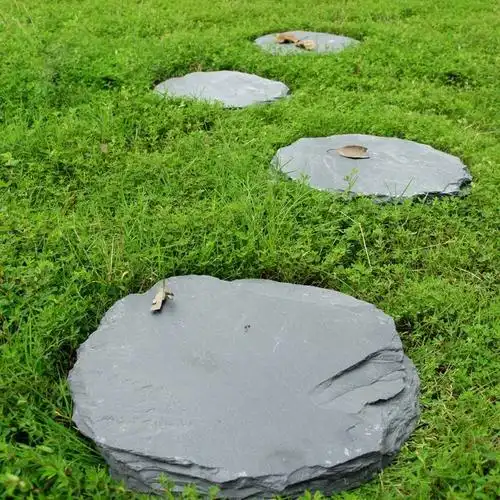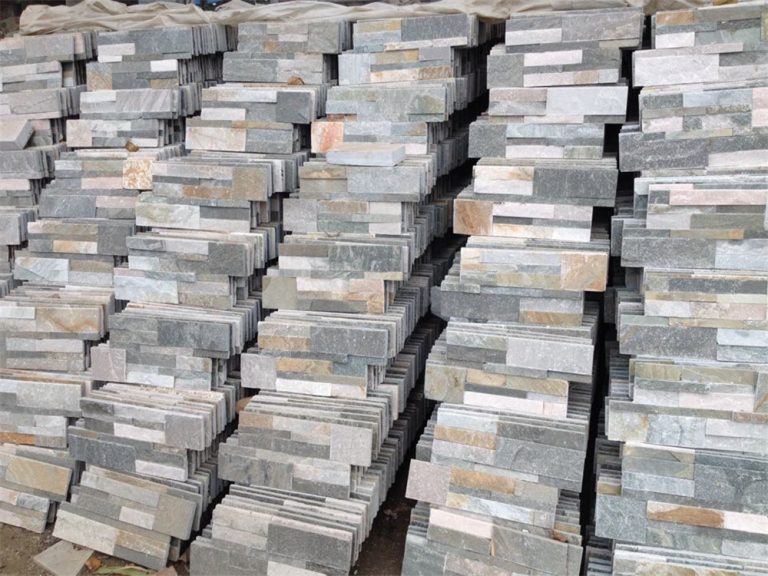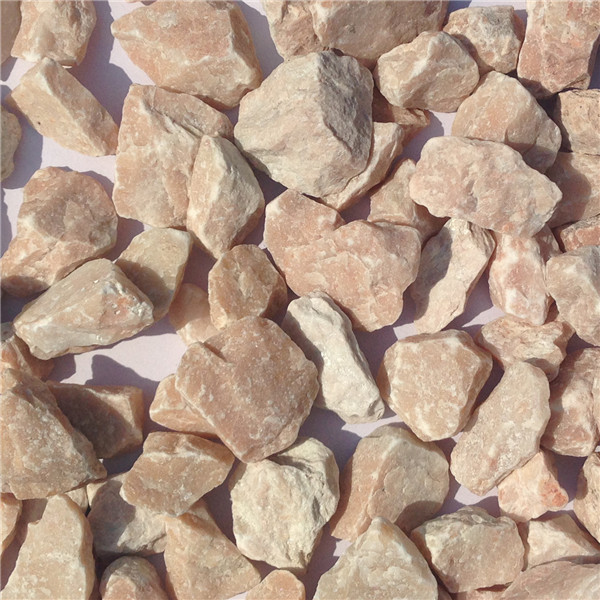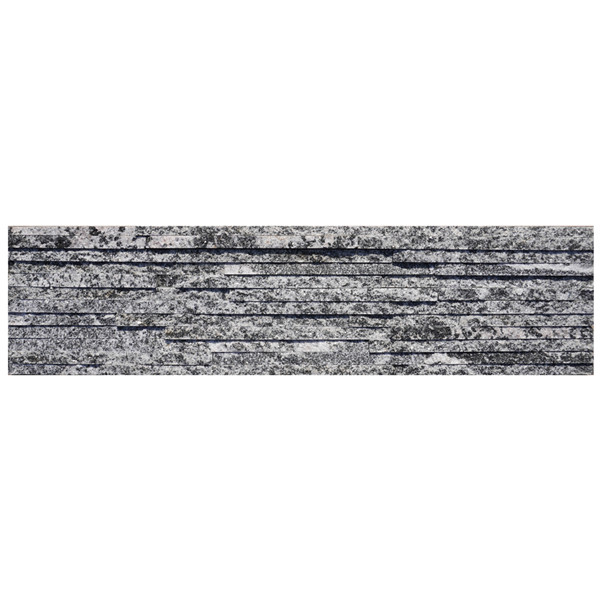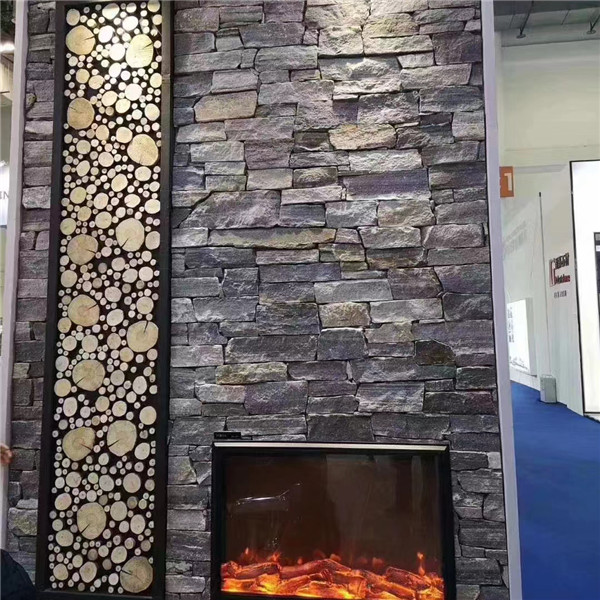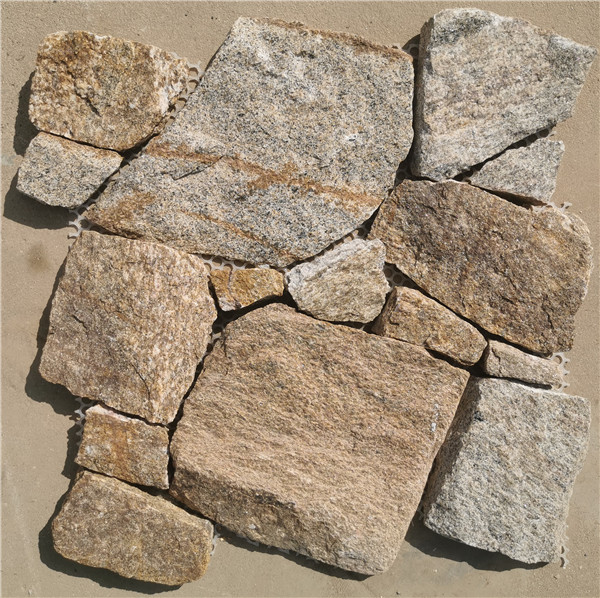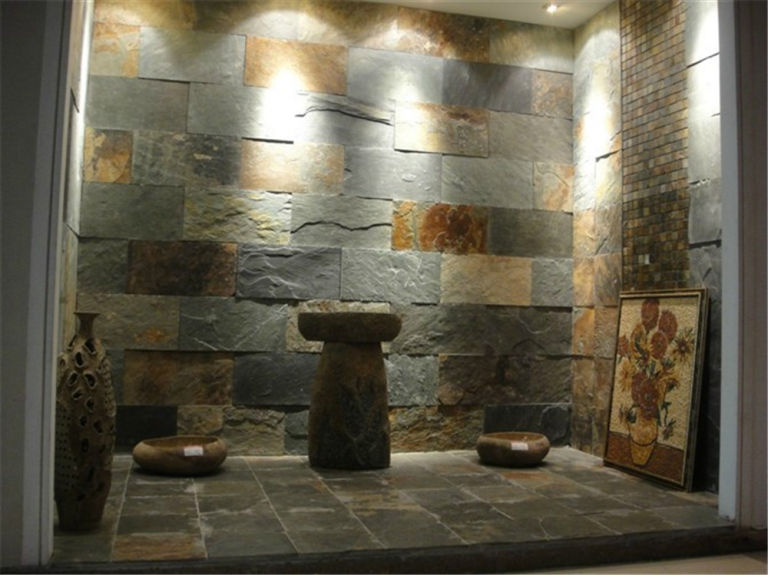Table of Contents
Toggle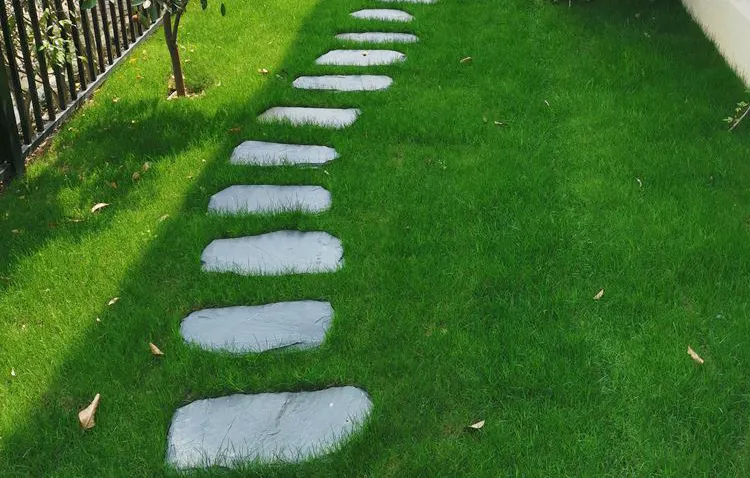
From meandering pathways that beckon exploration to cozy nooks inviting quiet contemplation, a well-curated garden is a sanctuary for the senses. Amidst this verdant tapestry, stepping stones emerge as functional yet artistic elements, weaving a narrative of your personal style. These unassuming pavers possess the remarkable ability to transform a mundane stretch into a delightful journey, captivating the imagination with each step.
However, the art of selecting the perfect stepping stones demands thoughtful consideration, as they are not mere embellishments but an extension of your garden’s essence. In this comprehensive guide, we will unravel the nuances that shape this harmonious marriage of form and function, empowering you to craft a whimsical trail that resonates with your unique vision.
Unveiling the Enchantment: Understanding Stepping Stones
Before delving into the intricacies of selection, let us first appreciate the inherent charm of stepping stones. These unassuming pavers transcend their utilitarian purpose, becoming vessels of creativity and self-expression. Whether you envision a sleek, contemporary aesthetic or a whimsical celebration of nature’s imperfections, stepping stones offer a canvas upon which your imagination can take flight.
Beyond their aesthetic allure, stepping stones serve as practical pathways, guiding visitors through your outdoor haven while fostering a sense of adventure and discovery. Children, in particular, delight in the playful act of hopping from one stone to the next, transforming a simple stroll into an engaging activity. Moreover, these pavers provide a solution for navigating uneven or damp terrain, offering a stable and elevated platform that ensures safe passage.
Harmonizing Purpose and Functionality: Considerations for the Ideal Shape
When embarking on your quest for the perfect stepping stones, the first consideration should be their intended purpose and functionality. Contemplate the primary role of the pathway: Is it a well-trodden thoroughfare or a decorative accent? If the path is expected to accommodate frequent foot traffic, opt for larger, more robust shapes such as rectangles or squares, which offer a stable and spacious surface for comfortable traversal.
Conversely, if your goal is to create an ornamental walkway or garden accent, you can indulge in the whimsy of irregular or geometric patterns. These unconventional shapes seamlessly blend with the surrounding landscape, evoking a sense of organic beauty and inviting exploration.
Embracing the Essence: Landscape Design and Aesthetic Appeal
As stepping stones are intrinsically woven into the fabric of your garden, their shape should harmoniously complement the overall landscape design and aesthetic appeal. Carefully consider existing elements such as vegetation, architectural details, and hardscaping features, allowing the stepping stones to resonate with the surrounding ambiance.
For landscapes that celebrate nature’s untamed beauty, irregular or organic shapes can meld effortlessly with the environment, creating a seamless transition between the built and natural realms. Alternatively, geometric forms like circles or hexagons can infuse modern landscapes with a fresh, contemporary vibe, striking a balance between sleek minimalism and organic charm.
Navigating Space: Pathway Length and Width Considerations
The dimensions of your pathway will undoubtedly influence the shape and size of your stepping stones. For longer paths that meander through expansive gardens, rectangular or elongated designs offer a sense of continuity and flow, guiding visitors on a captivating journey. Conversely, smaller shapes like squares or circles can maximize the available space in compact areas or shorter passageways, creating a cozy and intimate atmosphere.
When determining the width of your stepping stone path, consider not only aesthetics but also accessibility. If the pathway is intended for wheelchair or stroller use, prioritize shapes that provide a flat, even surface and ample space for safe navigation.
Safety First: Ensuring Secure Footing and Accessibility
While stepping stones are inherently designed for traversal, safety should never be compromised in the pursuit of beauty. When selecting shapes, especially in public or commercial spaces, prioritize forms that offer secure footing and minimize the risk of tripping or slipping. Avoid stones with angular or sharp edges, as these can pose hazards, particularly for children or the elderly.
If accessibility is a concern, ensure that the stepping stones have a flat, even surface to facilitate smooth travel for those with mobility challenges. Consult local regulations and guidelines to ensure compliance with accessibility standards, ensuring that your garden oasis is a welcoming haven for all.
Enduring Beauty: Maintenance and Durability Considerations
Just as the shape of your stepping stones influences the overall aesthetic, it also plays a crucial role in their maintenance and durability. Flat, smooth surfaces are typically easier to keep clean and maintain, as they are less prone to accumulating dirt and debris in crevices or uneven surfaces.
Additionally, consider the construction material of the stepping stones. Natural stones like slate or flagstone offer timeless beauty and enduring resilience, capable of withstanding the elements for decades with proper care. Concrete stones, while more versatile and requiring less maintenance, may not possess the same longevity as their natural counterparts.
Simplifying Installation: Flexibility and Ease of Placement
The installation process should not be overlooked when selecting stepping stone shapes. While some forms may require intricate and time-consuming installation techniques, others can be assembled swiftly and effortlessly, allowing you to enjoy the fruits of your labor sooner.
Ensure that the chosen shapes can be arranged in accordance with the desired stepping stone pattern or layout, whether it be a meandering trail or a structured grid. Shapes that offer flexibility in placement can simplify the installation process, enabling you to create a cohesive and visually appealing design with minimal effort.
Budgeting Wisely: Cost Considerations for Stepping Stones
Lastly, financial constraints often play a pivotal role in shaping our choices. Stepping stones are available in a vast array of sizes, materials, and price points, catering to diverse budgets. Establish your spending limit early on and explore the options that align with your vision while remaining within your financial means.
Remember, the true value of stepping stones lies not in their monetary cost but in their ability to elevate the beauty and functionality of your outdoor space. With careful planning and thoughtful selection, you can create a captivating garden trail that seamlessly blends affordability with aesthetic appeal.
Unveiling Nature’s Tapestry: Exploring Stepping Stone Materials and Finishes
Stepping stones are not merely functional elements; they are canvases upon which nature’s artistry is displayed. From the rugged charm of natural stone to the sleek sophistication of concrete, a myriad of materials and finishes await your discerning eye.
Natural Stone: Timeless Elegance and Durability
Natural stones, such as travertine, limestone, marble, bluestone, and sandstone, have long been revered for their timeless beauty and enduring resilience. These materials possess a unique character, with each stone bearing the indelible marks of its geological journey, from subtle veining to captivating hues that deepen with age.
One of the primary allures of natural stone stepping stones is their ability to withstand the elements. These pavers are forged by nature’s relentless forces, rendering them resistant to the ravages of time, weather, and wear. With proper care and maintenance, natural stone stepping stones can grace your garden for decades, their beauty only intensifying with each passing season.
Moreover, natural stones offer a vast array of textures and finishes, from the smooth, polished surfaces that exude sophistication to the rugged, slip-resistant textures that ensure secure footing. This versatility allows you to tailor the stepping stones to your specific needs and preferences, creating a harmonious fusion of function and form.
Concrete: Versatility and Cost-Effectiveness
For those seeking a more budget-friendly option, concrete stepping stones present a compelling alternative. While they may lack the organic charm of natural stone, these manufactured pavers offer unparalleled versatility in terms of shapes, sizes, and colors.
One of the key advantages of concrete stepping stones is their frost resistance, making them an ideal choice for regions with harsh winter conditions. Additionally, their durability and low maintenance requirements contribute to their enduring appeal, ensuring that your garden pathway remains a captivating feature for years to come.
Concrete stepping stones can also be crafted to mimic the appearance of natural stone, offering a cost-effective solution for those seeking the aesthetic allure of premium materials without the associated financial burden. With skilled artisans and advanced manufacturing techniques, these pavers can seamlessly blend into your garden’s tapestry, creating a visually stunning and cohesive ambiance.
Brick and Wood: Rustic Charm and Warmth
For those seeking a more rustic and organic ambiance, brick and wood stepping stones present an alluring option. These materials exude a warmth and charm that seamlessly complements natural landscapes, evoking a sense of nostalgia and timeless elegance.
Brick stepping stones, with their rich hues and textured surfaces, can create a captivating contrast against lush foliage, adding depth and character to your garden’s aesthetic. Whether you opt for traditional clay bricks or more contemporary concrete varieties, these pavers offer a timeless appeal that transcends fleeting trends.
Wooden stepping stones, on the other hand, introduce a natural warmth and organic appeal to your outdoor space. These pavers can be crafted from a variety of woods, each with its own unique grain pattern and hue, allowing you to create a truly personalized and distinctive pathway.
While brick and wood stepping stones may require more maintenance than their stone or concrete counterparts, their inherent charm and ability to patina over time lend an unparalleled sense of authenticity and character to your garden’s design.
Metal and Resin: Contemporary Flair and Artistic Expression
For those seeking a more contemporary or artistic expression, metal and resin stepping stones offer a unique and captivating alternative. These materials transcend the boundaries of traditional stepping stone design, allowing for innovative shapes, textures, and colors that defy convention.
Metal stepping stones, whether crafted from aluminum, steel, or copper, introduce a sleek and industrial aesthetic to your outdoor space. Their clean lines and reflective surfaces create a striking contrast against the organic elements of your garden, evoking a sense of modernity and sophistication.
Resin stepping stones, on the other hand, open up a world of artistic possibilities. These pavers can be molded into virtually any shape or design, allowing you to create truly unique and personalized pathways that reflect your individual style and creativity. From intricate patterns to vibrant colors, resin stepping stones offer a canvas upon which your imagination can take flight.
While metal and resin stepping stones may require specialized installation and maintenance techniques, their ability to elevate your garden’s design to new heights makes them a compelling choice for those seeking to push the boundaries of traditional stepping stone design.
Harmonizing Color: Creating Focal Points and Complementing Landscapes
Just as the shape and material of your stepping stones contribute to the overall aesthetic, their color plays a pivotal role in shaping the ambiance of your outdoor space. Whether you seek to create a captivating focal point or seamlessly complement the existing landscape, the strategic selection of hues can transform your garden into a visual masterpiece.
Neutral Tones: Unifying Diverse Elements
If your garden boasts a vibrant tapestry of colors, neutral-toned stepping stones can serve as a unifying force, tying together the diverse elements into a cohesive and harmonious design. Shades like warm beiges, cool grays, or earthy browns offer a subtle backdrop that allows the vibrant hues of your foliage and flowers to take center stage.
Neutral stepping stones also provide a versatile canvas upon which you can experiment with seasonal accents or ever-changing garden designs. Their understated elegance ensures that they seamlessly blend with any color palette, allowing you to indulge your creativity without the risk of clashing tones or overwhelming the senses.
Bold and Vibrant Hues: Creating Captivating Focal Points
Alternatively, if you seek to create a captivating focal point within your garden, bold and vibrant stepping stone colors can be the perfect solution. Vivid hues like deep reds, rich blues, or vibrant yellows can draw the eye and inject a sense of energy and vitality into your outdoor space.
When selecting bold colors, consider the overall color scheme of your garden and choose complementary or contrasting tones that enhance the visual impact. For instance, a vibrant red stepping stone path can create a striking contrast against lush green foliage, while a deep blue can evoke a sense of tranquility and depth, serving as a calming counterpoint to vibrant floral displays.
Remember, bold colors can be powerful tools in your design arsenal, but moderation is key. Incorporate these vivid hues judiciously, allowing them to serve as accents or focal points rather than overwhelming the entire space.
Harmonizing with Nature: Blending Earthy Tones
For those seeking to create a seamless transition between the built and natural environments, earthy tones can be the perfect choice for your stepping stones. Shades like warm terracotta, rich ochre, or deep olive green can seamlessly blend with the surrounding foliage, creating a cohesive and organic ambiance.
These earthy hues evoke a sense of grounding and connection with nature, inviting visitors to slow down and appreciate the beauty that surrounds them. They also provide a versatile backdrop for a wide range of plant life, allowing the vibrant colors of your flora to take center stage without competing for attention.
When selecting earthy tones, consider the natural color palette of your region and choose hues that complement the local landscape. This approach not only enhances the aesthetic appeal of your garden but also fosters a sense of harmony and belonging, creating a truly immersive and authentic outdoor experience.
Laying the Path: Installation Techniques for Stepping Stones
Once you have carefully selected the perfect stepping stones for your garden, the installation process becomes the next crucial step in bringing your vision to life. There are numerous methods for laying stepping stones, each with its own unique advantages and considerations.
The Gravel or Sand Bed Method
One of the most common and versatile installation techniques is the gravel or sand bed method. This approach involves digging a shallow trench or hole slightly larger than the stepping stone itself, then filling it with a layer of gravel or sand. The stepping stone is then placed atop this bed, ensuring a stable and level foundation.
The gravel or sand bed method offers several advantages. First, it allows for excellent drainage, preventing water from pooling around the stepping stones and minimizing the risk of erosion or displacement. Additionally, the flexible nature of the gravel or sand bed accommodates slight shifts in the ground over time, reducing the likelihood of cracking or dislodging the stones.
When using this method, it is essential to ensure that the gravel or sand bed is properly compacted and leveled to provide a solid foundation for the stepping stones. Proper preparation and attention to detail during the installation process will ensure a long-lasting and visually appealing pathway.
The Concrete Bed Method
For those seeking a more permanent and robust installation, the concrete bed method may be the ideal solution. This technique involves pouring a shallow layer of concrete into a pre-dug trench or hole, then carefully placing the stepping stones atop the wet concrete.
The concrete bed method offers superior stability and durability, ensuring that the stepping stones remain firmly in place, even in areas with significant foot traffic or harsh weather conditions. Additionally, the concrete bed can be reinforced with rebar or wire mesh, further enhancing its strength and longevity.
While the concrete bed method requires more initial effort and preparation, it provides a long-lasting solution that minimizes the need for future maintenance or repairs. However, it is important to note that this method may not be as forgiving as the gravel or sand bed approach when it comes to accommodating ground shifts or settling over time.
The Mortar Bed Method
For those seeking a compromise between the flexibility of the gravel or sand bed method and the durability of the concrete bed approach, the mortar bed method offers a viable alternative. This technique involves creating a shallow bed of mortar, into which the stepping stones are carefully pressed and leveled.
The mortar bed method provides a stable foundation while still allowing for some flexibility and movement, accommodating slight shifts in the ground without causing significant damage to the stepping stones. Additionally, the mortar bed can be reinforced with wire mesh or other materials for added strength and longevity.
When using the mortar bed method, it is crucial to follow the manufacturer’s instructions for mixing and applying the mortar correctly. Proper curing and drying times must also be observed to ensure the longevity and integrity of the installation.
The Grass or Groundcover Method
For those seeking a more natural and organic approach, the grass or groundcover method presents an alluring option. This technique involves carefully placing the stepping stones directly onto the soil or existing ground cover, allowing the surrounding vegetation to grow around and between the stones.
The grass or groundcover method offers a seamless integration of the stepping stones into the natural landscape, creating a visually stunning and harmonious aesthetic. Additionally, this approach can be particularly well-suited for areas with uneven or sloping terrain, as the stepping stones can be adjusted and leveled individually to accommodate the contours of the ground.
However, it is important to note that the grass or groundcover method may require more frequent maintenance, as the surrounding vegetation will need to be trimmed or managed to prevent overgrowth and maintain a tidy appearance. Additionally, the stepping stones may be more susceptible to shifting or sinking over time, particularly in areas with softer or more unstable soil conditions.
Spacing and Stride: Achieving Comfort and Accessibility
Achieving the perfect balance between aesthetics and functionality is paramount when it comes to stepping stone installation. One crucial aspect that often goes overlooked is the spacing and stride between each stone. Proper spacing not only ensures a comfortable and natural gait but also contributes to the overall visual appeal of the pathway.
When determining the optimal spacing, a general guideline is to maintain a distance of approximately 250-300 millimeters (10-12 inches) between each stepping stone. This spacing allows for a natural stride length, reducing the risk of awkward stretching or uncomfortable stepping motions. However, it is essential to consider the intended users of the pathway, as stride lengths can vary based on factors such as age, height, and mobility.
For pathways intended for children or those with shorter strides, a slightly closer spacing may be more appropriate, ensuring that each step is within a comfortable reach. Conversely, for pathways designed for taller individuals or those with longer strides, a wider spacing may be preferable to prevent the need for excessive stretching or overstepping.
In addition to comfort, proper spacing also plays a role in accessibility. If the pathway is intended for use by individuals with mobility challenges or those using assistive devices such as wheelchairs or walkers, it is crucial to ensure that the spacing between stones is sufficient to accommodate these devices. Consulting local accessibility guidelines and regulations can provide valuable insights into the recommended spacing requirements for inclusive design.
Beyond functional considerations, the spacing between stepping stones can also contribute to the overall aesthetic appeal of the pathway. A well-planned spacing can create a sense of rhythm and flow, guiding the eye along the path and enhancing the overall visual experience. Irregular or organic spacing patterns can lend a whimsical and natural feel, while uniform spacing can create a more structured and formal ambiance.
When designing the spacing pattern, it is essential to consider the overall layout and shape of the pathway. For winding or curved paths, a more organic spacing pattern may be more visually appealing, mimicking the natural contours of the landscape. Conversely, for straight or geometric pathways, a uniform spacing pattern can create a sense of order and cohesion, complementing the structured design elements.
Ultimately, achieving the perfect balance between comfort, accessibility, and aesthetics in stepping stone spacing requires careful consideration and planning. By taking into account the intended users, accessibility requirements, and overall design vision, you can create a pathway that not only looks stunning but also provides a safe and enjoyable experience for all who traverse it.
Embracing the Elements: Weather Resistance and Durability
While stepping stones are designed to withstand the great outdoors, their ability to endure the elements can vary significantly depending on the materials used and the environmental conditions they are exposed to. Ensuring that your stepping stones possess the necessary weather resistance and durability is crucial for maintaining their beauty and functionality over time.
Frost Resistance and Cold Weather Durability
In regions with harsh winters and freezing temperatures, frost resistance becomes a critical consideration when selecting stepping stones. Materials like natural stone, particularly those with a dense and non-porous composition, are often highly resistant to the damaging effects of frost heaving and freeze-thaw cycles.
Concrete stepping stones can also be an excellent choice for cold climates, as they are designed to withstand freezing temperatures and the expansion and contraction that accompanies temperature fluctuations. However, it is essential to ensure that the concrete used in the manufacturing process is of high quality and properly cured, as poorly mixed or improperly cured concrete can be susceptible to cracking and spalling over time.
For those seeking a more cost-effective option, composite materials like resin or recycled plastic stepping stones can also offer frost resistance, making them a viable choice for cold weather applications. These materials are designed to be flexible and resilient, minimizing the risk of cracking or shattering due to freezing temperatures.
Water Resistance and Moisture Management
In addition to cold weather durability, water resistance is another crucial factor to consider when selecting stepping stones. Prolonged exposure to moisture can lead to a variety of issues, including staining, discoloration, and the growth of mold or algae, which can compromise the aesthetic appeal and safety of the pathway.
Natural stone stepping stones, particularly those with a dense and non-porous composition, such as slate or granite, are highly resistant to water absorption and can withstand exposure to moisture without significant degradation. However, it is essential to ensure that these stones are properly sealed and maintained to prevent water from penetrating the surface and causing potential damage over time.
Concrete stepping stones can also offer excellent water resistance when properly manufactured and sealed. However, it is crucial to choose high-quality concrete mixes and to apply a suitable sealer or waterproofing agent to prevent moisture intrusion and potential cracking or spalling.
For those seeking a more budget-friendly option, composite materials like resin or recycled plastic stepping stones can provide a water-resistant solution. These materials are designed to be impervious to moisture, making them a low-maintenance choice for areas with high humidity or frequent rainfall.
UV Resistance and Color Fastness
In addition to cold weather and moisture resistance, the ability of stepping stones to withstand prolonged exposure to ultraviolet (UV) radiation is another critical consideration, particularly in regions with intense sunlight or high altitudes. UV radiation can cause fading, discoloration, and even structural degradation in certain materials over time.
Natural stone stepping stones, such as granite, quartzite, or slate, are generally highly resistant to UV radiation and maintain their color and integrity over extended periods of exposure. These materials are naturally UV-stable and do not require additional treatments or coatings to protect against fading or discoloration.
Concrete stepping stones, on the other hand, may require additional measures to enhance their UV resistance. The incorporation of UV-resistant pigments or the application of specialized sealants or coatings can help protect the concrete from fading and deterioration caused by prolonged sun exposure.
Composite materials like resin or recycled plastic stepping stones can also offer excellent UV resistance, as they are often designed and manufactured with UV-stabilizing additives that prevent fading and degradation. However, it is essential to verify the specific UV resistance capabilities of these materials, as some lower-quality products may be more susceptible to discoloration over time.
By carefully considering the weather resistance and durability requirements of your stepping stones, you can ensure that your outdoor pathway remains a beautiful and functional feature for years to come, withstanding the challenges posed by nature’s elements.
Blending Aesthetics and Function: Incorporating Stepping Stones into Landscape Design
While stepping stones serve a practical purpose by providing a navigable path through your outdoor space, their true beauty lies in their ability to seamlessly blend with the surrounding landscape design. By thoughtfully incorporating stepping stones into your overall aesthetic vision, you can create a harmonious and visually stunning outdoor oasis that captivates the senses.
Complementing Existing Architectural Elements
One of the most effective ways to integrate stepping stones into your landscape design is by considering the existing architectural elements of your property. Whether you have a modern, minimalist home or a rustic, traditional abode, selecting stepping stones that complement the overall style and materials used in the construction can create a cohesive and visually appealing transition between the built and natural environments.
For contemporary homes with clean lines and sleek finishes, consider stepping stones with geometric shapes and smooth surfaces, such as polished concrete or honed natural stone. These materials can create a sense of continuity and flow, seamlessly blending with the architectural elements while providing a modern and sophisticated touch to your outdoor space.
Conversely, for homes with a more traditional or rustic aesthetic, stepping stones with irregular shapes and textured surfaces can add a charming and organic touch to your landscape design. Natural stone options like flagstone or fieldstone can evoke a sense of timelessness and integrate seamlessly with the existing architectural elements, creating a warm and inviting ambiance.
Accentuating Natural Surroundings
In addition to complementing architectural elements, stepping stones can also serve as a powerful tool for accentuating and enhancing the natural beauty of your surroundings. By carefully considering the colors, textures, and patterns present in the existing vegetation and terrain, you can select stepping stones that harmonize with the environment, creating a seamless and visually stunning transition.
For gardens with lush, vibrant foliage and a diverse array of colors, consider stepping stones with earthy tones and organic shapes that blend seamlessly with the surrounding greenery. Natural stone options like sandstone or slate can provide a subtle backdrop that allows the vibrant hues of your plants and flowers to take center stage.
In contrast, for landscapes with more subdued or muted color palettes, stepping stones with bolder hues or intricate patterns can introduce a captivating focal point, drawing the eye and adding depth and dimension to your outdoor space. Vibrant concrete stepping stones or intricate tile mosaics can create a striking contrast against the natural surroundings, transforming your garden into a true work of art.
Creating Functional Pathways and Gathering Spaces
While aesthetic considerations are crucial, it is equally important to ensure that your stepping stones serve a functional purpose within your landscape design. By carefully planning the placement and layout of your stepping stones, you can create inviting pathways that guide visitors through your outdoor space, as well as cozy gathering areas for relaxation and enjoyment.
For pathways, consider the natural flow and movement patterns within your garden, and design your stepping stone layout accordingly. Winding paths that meander through lush foliage and around architectural features can create a sense of discovery and exploration, inviting visitors to slow down and appreciate the beauty that surrounds them.
Alternatively, for gathering spaces, strategically placed stepping stones can create intimate seating areas or outdoor living rooms, providing a comfortable and inviting space for entertaining or simply enjoying the tranquility of your garden. By incorporating complementary elements such as benches, water features, or fire pits, you can create a truly immersive and multisensory experience that seamlessly blends form and function.
Ultimately, by thoughtfully integrating stepping stones into your landscape design, you can create a cohesive and visually stunning outdoor oasis that not only enhances the aesthetic appeal of your property but also provides functional and inviting spaces for relaxation, entertainment, and exploration.
Embracing Sustainability: Eco-Friendly Stepping Stone Options
In today’s increasingly eco-conscious world, it is essential to consider the environmental impact of the materials we choose for our outdoor spaces. Stepping stones, while seemingly innocuous, can have a significant carbon footprint depending on their composition and manufacturing processes. Fortunately, there are a variety of eco-friendly stepping stone options available that not only reduce your environmental impact but also add a unique and captivating touch to your garden.
Recycled and Repurposed Materials
One of the most sustainable options for stepping stones is the use of recycled and repurposed materials. These stepping stones are crafted from materials that would otherwise end up in landfills or contribute to environmental degradation, giving them a second life and reducing waste.
Recycled concrete stepping stones are a popular choice, as they divert construction and demolition debris from landfills while providing a durable and long-lasting solution for your outdoor pathways. These stepping stones can be sourced from recycled concrete pavers, curbs, or even crushed concrete, offering a unique and textured aesthetic that adds character to your garden.
Similarly, recycled glass stepping stones offer a visually stunning and eco-friendly option. These stepping stones are created by encasing recycled glass fragments or bottles in a durable concrete or resin matrix, resulting in a vibrant and eye-catching finish that catches the light in captivating ways. Not only do these stepping stones reduce waste, but they also support the recycling industry and promote sustainable practices.
Repurposed materials like reclaimed wood or salvaged bricks can also be transformed into beautiful and unique stepping stones, adding a rustic charm to your outdoor space while diverting these materials from landfills or demolition sites.
Natural and Locally Sourced Materials
In addition to recycled and repurposed options, natural and locally sourced materials can also provide an eco-friendly solution for your stepping stone needs. These materials often have a lower carbon footprint due to reduced transportation distances and more sustainable extraction or manufacturing processes.
Natural stone stepping stones, such as slate, flagstone, or fieldstone, are a popular choice for their durability, beauty, and low environmental impact. These stones are quarried from the earth and require minimal processing, making them a more sustainable option compared to manufactured materials like concrete or ceramic tiles.
When sourcing natural stone stepping stones, consider choosing options that are locally quarried or sourced from nearby regions. This not only reduces the carbon footprint associated with transportation but also supports local economies and preserves the unique character of your region’s natural resources.
Additionally, consider stepping stones made from sustainable or renewable materials like bamboo or cork. These materials are rapidly renewable and often sourced from responsibly managed plantations, making them an eco-friendly choice for your outdoor spaces.
Permeable and Pervious Options
Another eco-friendly consideration for stepping stones is their permeability and ability to allow water to infiltrate the ground. Impervious surfaces like concrete or solid stone can contribute to increased runoff and potential flooding issues, while permeable stepping stones help to mitigate these problems by allowing water to seep into the soil.
Permeable pavers or stepping stones made from porous materials like recycled rubber or specialized concrete mixes are designed to allow water to pass through, reducing the impact on local drainage systems and promoting groundwater recharge. These stepping stones can be particularly beneficial in areas with high rainfall or poor drainage, as they help to prevent water from pooling and reduce the risk of erosion or soil saturation.
In addition to their environmental benefits, permeable stepping stones can also enhance the overall aesthetic of your garden by allowing vegetation to grow between the pavers, creating a seamless integration of natural and built elements.
By embracing eco-friendly stepping stone options, you can not only create a beautiful and functional outdoor space but also contribute to a more sustainable future. Whether you choose recycled materials, locally sourced natural stones, or permeable pavers, your stepping stone selection can be a reflection of your commitment to environmental stewardship and a harmonious coexistence with nature.
Maintenance Mastery: Caring for Your Stepping Stones
While stepping stones are designed to withstand the elements and provide long-lasting beauty in your outdoor space, proper maintenance is essential to ensure their longevity and preserve their aesthetic appeal. By incorporating a few simple care routines into your gardening regimen, you can keep your stepping stones looking their best for years to come.
Regular Cleaning and Debris Removal
One of the most fundamental aspects of stepping stone maintenance is regular cleaning and debris removal. Over time, dirt, leaves, and other organic matter can accumulate on the surface of your stepping stones, creating an unsightly appearance and potentially leading to the growth of moss, algae, or other unwanted vegetation.
To keep your stepping stones looking pristine, make it a habit to sweep or gently brush them on a regular basis, removing any loose debris or buildup. For more stubborn stains or ingrained dirt, you can use a mild detergent solution and a soft-bristled brush to gently scrub the surface. Avoid using harsh chemicals or abrasive materials, as these can potentially damage or discolor the stepping stones.
Weed Control and Vegetation Management
Depending on the installation method and surrounding environment, weeds and unwanted vegetation may try to take root between your stepping stones or along their edges. Left unchecked, these plants can not only detract from the visual appeal of your pathway but also potentially cause the stones to shift or become uneven over time.
To maintain a tidy and well-groomed appearance, regularly remove any weeds or unwanted growth by hand or with the aid of a specialized weeding tool. For more persistent weeds, you may need to apply an appropriate herbicide or weed control product, taking care to follow the manufacturer’s instructions and avoiding overspray onto nearby plants or vegetation.
If you have opted for a more naturalistic approach, allowing vegetation to grow between your stepping stones, it is still important to periodically trim or manage the growth to prevent it from becoming overgrown or encroaching too far onto the pathway itself.
Sealing and Protecting Against the Elements
Depending on the material used for your stepping stones, periodic sealing or application of a protective coating may be necessary to safeguard against the damaging effects of the elements. Natural stone stepping stones, in particular, can benefit from the application of a high-quality sealant, which helps to prevent moisture absorption, staining, and the growth of mold or mildew.
When selecting a sealant, choose one that is specifically formulated for the type of stone you are working with, and follow the manufacturer’s instructions carefully. Some sealants may require periodic reapplication to maintain their effectiveness, so be sure to keep track of the recommended maintenance schedule.
For concrete or manufactured stepping stones, a specialized concrete sealer or protective coating can help to prevent fading, cracking, or other forms of deterioration caused by exposure to sunlight, moisture, or freeze-thaw cycles.
Addressing Cracks, Chips, and Damage
Despite your best efforts, it is possible that your stepping stones may sustain cracks, chips, or other forms of damage over time due to factors such as heavy foot traffic, shifting soil, or accidental impacts. Addressing these issues promptly is essential to prevent further deterioration and maintain the structural integrity of your pathway.
For minor cracks or chips, a high-quality epoxy or stone repair compound can often be used to fill and seal the affected area, restoring the smooth surface and preventing moisture from penetrating and causing further damage.
In cases of more severe damage or displacement, it may be necessary to remove and replace the affected stepping stones entirely. This process can be more involved, requiring careful excavation, preparation of a new base or foundation, and precise placement of the replacement stones to ensure a seamless and level




